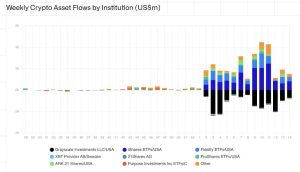Proof of reserves is a method used by cryptocurrency exchanges and other financial institutions to demonstrate that they hold a sufficient amount of assets in reserve to meet their customers’ demands. This helps to build trust and confidence in the institution and ensures that customers can be confident that their funds are safe and secure.
There are several different ways that institutions can provide proof of reserves. One standard method is for the institution to provide a list of all its assets and evidence that it holds the private keys to those assets. This can be done through cryptographic proof, such as a Merkle tree, or by having a trusted third party audit the institution’s reserves. Other methods of proof of reserve include providing regular reports on the institution’s financial health and publicly disclosing its financial statements.
Can the Proof of Reserves save the Cryptocurrency Industry?
Proof of reserves is a mechanism that can help to build confidence and reduce the risk of fraud or mismanagement of funds by crypto exchanges or financial institutions. However, it is essential to note that proof of reserves alone is not the complete solution to the trust issues that can arise in the cryptocurrency space. Many other factors can contribute to a lack of trust, such as poor security practices, insider fraud, and regulatory uncertainties. A wide range of measures and best practices must be implemented to address these issues and build a more trusted and secure cryptocurrency ecosystem.
How can Regulators utilize Proof of Reserves to enhance Transparency?
Regulators can make proof of reserves as a pre-requisite for exchanges and other financial institutions to reduce the risk of fraud or fund mismanagement. By establishing clear guidelines for what constitutes acceptable proof of reserves and by enforcing those guidelines through regular audits and other forms of oversight, regulators can help ensure that these institutions hold sufficient reserve assets to meet their customers’ demands.
In addition, regulators can use proof of reserve to assess these institutions’ overall financial health and stability. By reviewing the proof of reserve provided by financial institutions, regulators can better understand the assets they hold and the risks they might be exposed to. This can help regulators to identify potential problems or vulnerabilities in the industry and take action to address them before they become more serious.
Is Proof of Reserves Important to Founders?
For several reasons, proof of reserves can be necessary for founders of cryptocurrency exchanges and other financial institutions. By providing evidence that they hold sufficient assets in reserve to meet the demands of their customers, founders can help to establish their institution as a reliable and trustworthy place to carry out business. This can be especially important in the cryptocurrency industry, where there is often a lack of trust due to increased volatility, malicious scams, security issues, and regulatory concerns.
Another reason proof of reserve can be necessary for founders is that it can help reduce the risk of financial problems or mismanagement. By demonstrating that their institution holds sufficient assets in reserve, founders can help to reduce the risk of financial losses or other issues that could arise if the institution needs more assets to meet the demands of its customers. This can help founders to build a more stable and secure business, which can be especially important in the volatile and dynamic crypto industry.
Disclaimer: This article is provided for informational purposes only. It is not offered or intended to be used as legal, tax, investment, financial, or other advice.





















